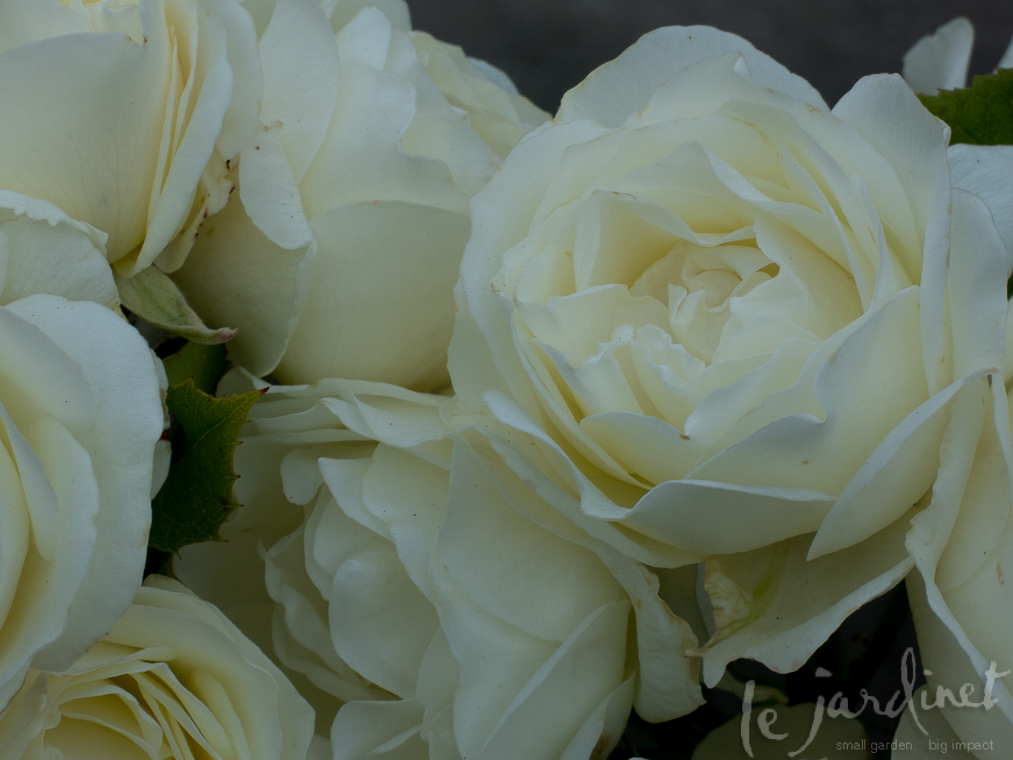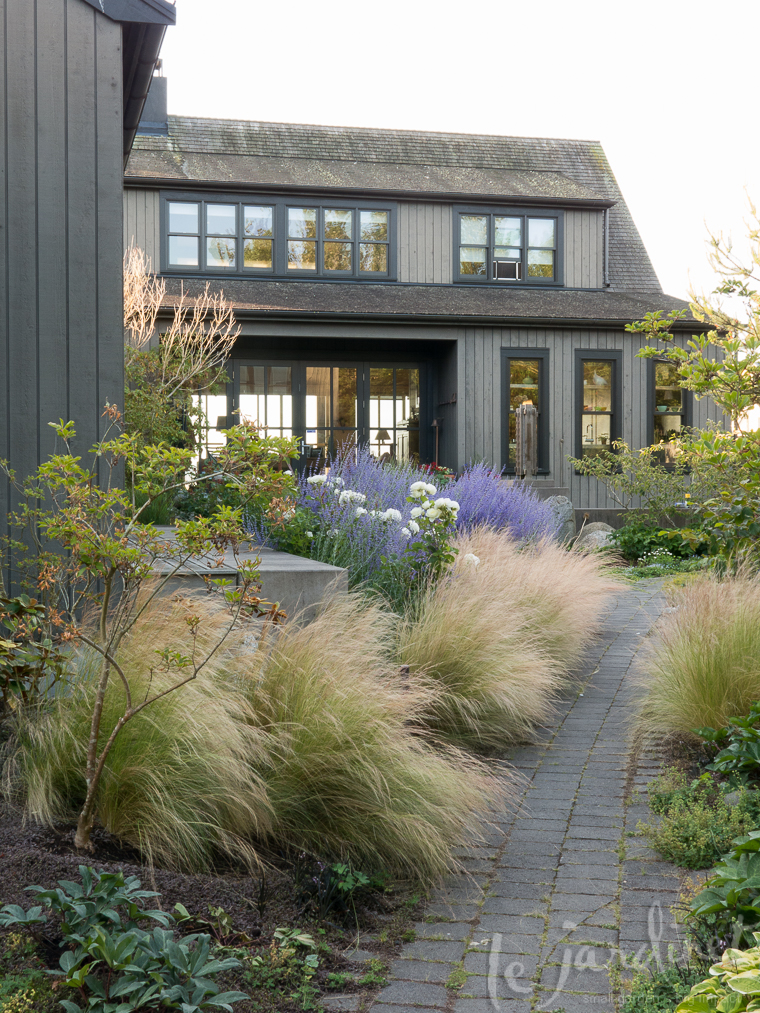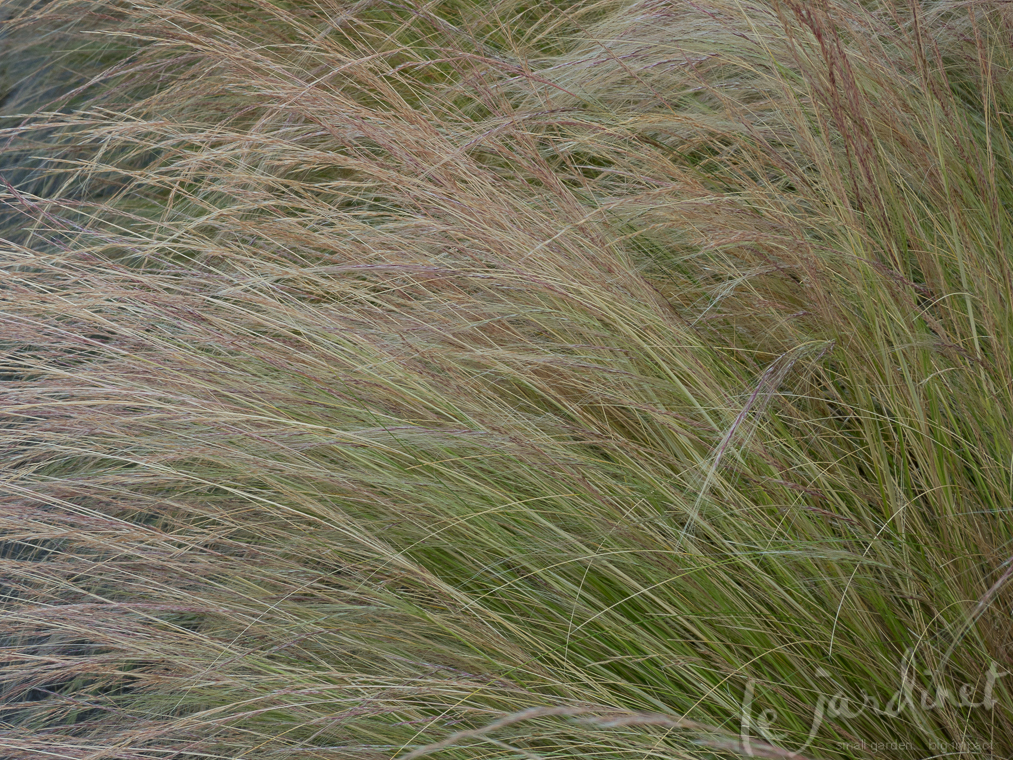A Unique Rose Garden
How do you use roses in your garden? Do you have a traditional, formal rose garden bordered with low boxwood hedges? Or are they part of a mixed border where they jostle with perennials such as delphiniums and phlox? Perhaps you prefer climbing roses and allow them to scramble up pergolas or use them as a support through which to encourage clematis?
There seems to be a rose for every situation from petite miniatures to house-swallowing monsters with fragrance and colors to suit all tastes but it can still be challenging to find just the right plants to combine with them so that the rose itself is enhanced while also enhancing its neighbors.
I had the opportunity recently to visit the delightful courtyard garden of Mary Jo Stansbury (Whidbey Island, WA) and was entranced by the delightful naturalized vignette she had created around the white Moondance rose in one of the borders. Billowing fountains of shimmering Mexican feather grass (Nassella tenuissima syn. Stipa tenuissima) were swaying gently in the early morning breeze and a haze of blue Russian sage (Perovskia atriplicifolia) were in full bloom along the pathway. Nestled within this soft cradle were several pure white Moondance roses.
I had never seen roses planted in this way and I loved the juxtaposition of whisper-soft grasses with the thorny stems as much as I loved the simple blue and white color scheme. Rather than dominating the scene these roses were mingling easily and this casual elegance was enhanced by the color echo between the grass and roses.
Grasses have been used throughout this small garden, most of which was designed by the Berger Partnership. Mary Jo has fond memories of working with both Tom Berger and Jason Henry and commented that Jason's love of grasses is evident. (You will be able to see one of the combinations he designed in this garden for our new book Foliage First; Timber Press 2016)
When I asked her about this particular section of the garden Mary Jo laughingly admitted this was her haphazard design and explained that she tested Rosa 'Iceberg' first but found them too troublesome. Then she found the hybrid called Moondance that is disease resistant, fragrant and blooms all summer. "It actually does shine and dance like the moon on a windy night!", she said.
Mary Jo then added the Russian Sage to that section of the garden and now the combination is always a wonderful show at this time of year. Even before the Russian sage would be in bloom the felted white stems and silvery-green leaves would play into this meadow-inspired design perfectly.
This is one of those hauntingly simple designs that stirs the soul. Fragrance, movement, tactile – it's all here. It will shine in the evening and glow in the day.
Inspired?







Karen,
Isn't Mexican feathergrass invasive here in the PNW, as well as in California? Or does its rampant seed spread stop somewhere south of us? Admittedly, this article comes from the Sacramento area, but it does spotlight this ornamental grass as a real bona fide garden thug. (http://www.sacbee.com/entertainment/living/home-garden/debbie-arrington/article25525774.html)
And this summer, we seem to be sweltering through a California-type shift.
If Mexican feather grass IS problem, would it help your readers to know this?
Just wondering,
Karen
Hi Karen, thanks for commenting. No this grass is not considered invasive here in the greater Seattle area but like MANY other plants it behaves differently elsewhere. This is why it is important to consult with either a local horticulturalist or your extension service to ask for a suitable substitute if you are concerned. Purple moor grass comes to mind although not evergreen. Likewise grama grass has a similar feel.
Do bear in mind that this spreads by seeding but the soil – not just the climate – has a role to play in how well those seeds germinate. Those of us with clay soils struggle to get this through the winter if our soils are cold and waterlogged